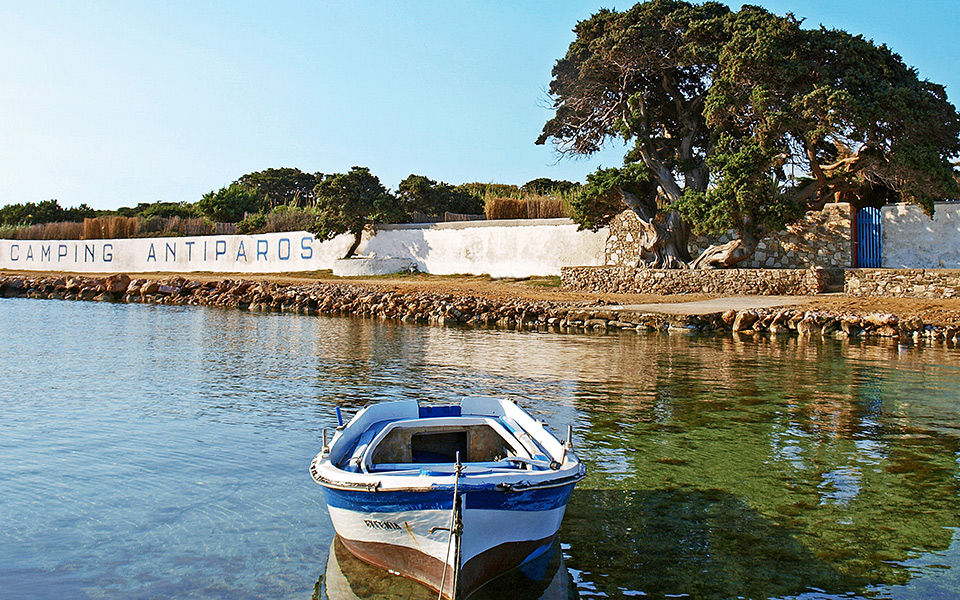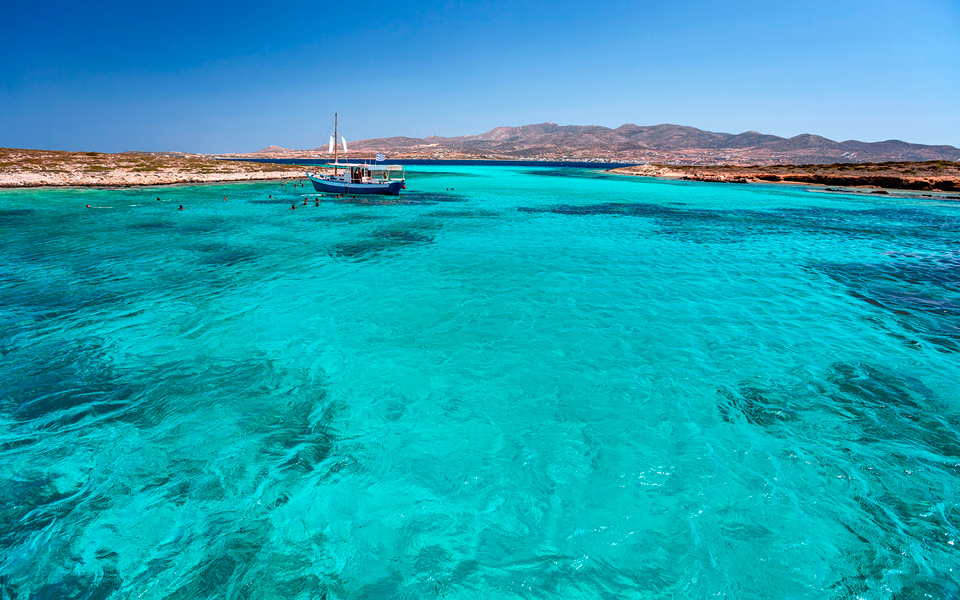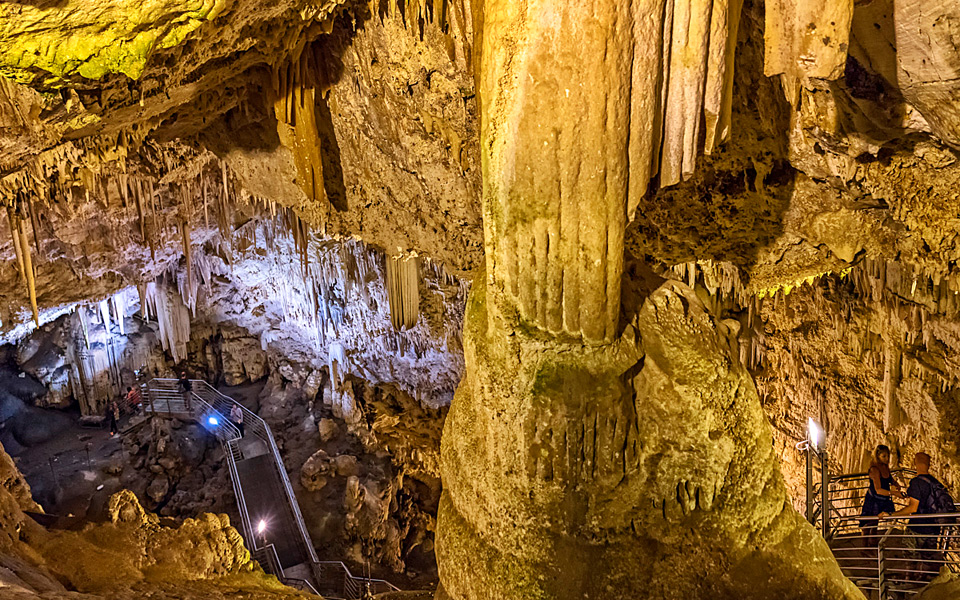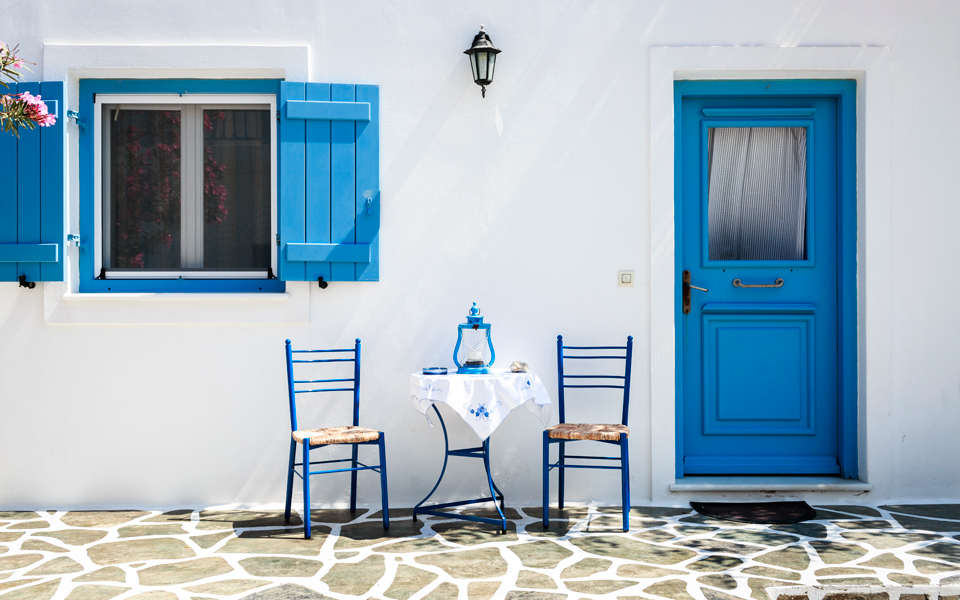The 5 best reasons to spend a day – or week – on Antiparos, Paros’ little sister.
Antiparos, a small, anti-mainstream island, has stood its ground as an alternative offshoot to neighboring Paros, tourism-oriented and cosmopolitan with a vibrant, fancy and high-decibel nightlife. By contrast, the mild tourism development on Antiparos has not taken away the purity of the island, a focal point for the rock-punk community since the pre-digital 80s. Those unconventional camping-ground types our parents advised us to keep away from have since grown old, lives were influenced by the considerable time spent at La Luna, the little island’s legendary outdoor club, as well as at the rock-oriented Doors club, dedicated to the late rocker Jim Morrison, while the “official nudist beach” – as defined by its frequenters – behind the camping ground, was a carefree spot. The Cycladic island’s hippy spirit has not really changed over the years. Five reasons to visit the island follow:

Camping Antiparos, which launched in 1978
1. Camping Antiparos
The island’s devotees widely believe that Antiparos is its camping facility, launched in 1978. It has carved out its own history on the island as an alternative-scene focal point and, even today, stands as the reason why many visitors choose to holiday on Antiparos. The restaurant operating at this 300-tent capacity camping facility is its pivotal spot. Groups of friends gather here to play cards and backgammon in the afternoons and enjoy their first warm-up drinks for the night. Most campsite dwellers usually don’t take off for the main town, a ten minute walk away, until well after midnight. Shots and cocktails are had at Camping Antiparos before they head to La Luna for late-night partying.
2. Life after 3am
The bars at the town’s square close at around 3 to 3.30am to avoid disturbing neighbors. As a result, revelers relocate to either the late-night La Luna disco or Mylos, a dance club.
The former, an open-air, down-to-earth nightlife oasis that enjoys cult status, is said to have once been the location of a poultry enclosure. Since opening in 1979, its owner has hardly touched a thing. Any signs of wear or tear have been left unattended, which has added to the spot’s accumulating vintage charm. La Luna is located deep amid fields. The moonlight serves as a useful guiding light to locate the spot, it is said. Everybody dances a lot here. The music is dominated by old classic tunes from the 70s and 80s. Revelers know when it is time to leave when Nina Simone’s “My Baby Just Cares For Me”, the club’s signature closing-time song, comes on. Strictly order beer here.
Extremely different, Mylos plays mainstream dance music. It is housed at an old mill with a view of the sky. At daybreak, the sunrays enter from the glass roof and revelers party on donning their sunglasses. Should you lose track of your friends in the crowd, you may climb the mill’s outdoor staircase to the top and try and spot them from there. Otherwise, the climb is ideal for the breeze and sunrise experience. Without a doubt, the two clubs represent two entirely different camps. You either belong to Mylos or La Luna. There is no between.

There are plenty serviced and non-serviced beaches to choose from
3. Down-to-earth beaches
Sifneiko beach, named as such because it looks towards Sifnos, also known as Iliovasilema, meaning sunset, is a lovely beach offering an uninterrupted sunset view. As the “golden hour” draws nearer, scores of people, especially couples, rush through the alleys to make it to the beach on time for the experience. Two laid back café-bars also operate here if you feel like treating yourself to a drink. The route to Sifneiko runs by a mid-15th century Venetian castle located within the town. It was built by Giovanni Loredano, a Venetian nobleman, to protect the island from pirate invasions. Twenty-four houses were later built in the surrounding area. Many of these are still inhabited today.
Soros beach is one of the most renowned and essential places to visit. Its Megalos beach is more cosmopolitan and offers a good beach bar. The Mikros beach, which is not organized and covered with fine pebble, offers greater privacy. From this point on, the shoreline features numerous delightful coves with turquoise waters and clean water.
Besides the beach by the island’s camping facility, part of which has been defined as “nudist” by frequenters, Faneromeni and Aghios Sostis, are the island’s other leading swimming spots. Located on the west side of the island, they are challenging to reach but well worth the effort. On the east side, Monastiria and Livadia are great spots for windsurfing and kite surfing.

One of the world’s most significant caves, located in the centre of the island, may be reached by descending 411 steps or 85 metres
4. The ancient and captivating cave
One of the world’s most significant caves, located in the centre of the island, may be reached by descending 411 steps or 85 metres. Its entrance is located at the top of the Ai-Giannis Mountain, also the name of the charming small church perched on the rock. Fragments of ancient vases, as well as carvings and inscriptions on stalactites and stalagmites by a number of historic figures, have been discovered inside the cave. The descent to the cave’s bottom is safe and reached by a concrete staircase. The heart of the cave is divided into three sections. The first features stalagmites and stalactites, resembling waterfalls. The second is renowned for having hosted a Christmas Day mass in 1673, during Ottoman rule. The third section is known as Vassilikos (Royal) as a result of a visit to the cave by King Otto, the first monarch of modern Greece, and his wife, Queen Amalia. Their inscriptions still exist.
5. Despotiko, the neighboring island-museum
Significant findings from ancient times have been made on Despotiko, an uninhabited island west of Antiparos, as well as at two other neighboring virgin islands, Tsimintiri and Stroggylo. The oldest Cycladic settlement was discovered on Saliagos, an islet off Antiparos. However, the archaeological interest is focused on Despotiko, identified as the location of Ancient Prepesinthos, where proto-Cycladic tombs and cemeteries were discovered a century ago. Two constructions were also discovered a few decades later. One of these, a superb sanctuary dedicated to the god Apollo, is estimated to have been used from the 7th century BC until the Roman era. The people of Paros built this place of worship as they were determined to consolidate their dominance in the Aegean. Numerous parts of sculptures, six kouros heads and over 500 architectural pieces are some of the discoveries that have been made over the years, shedding intensifying light on ancient Greek history. Despotiko may be easily reached by boat from the small Ai-Giorgis port at Antiparos. Once there, do not miss out on the opportunity to swim in this little island’s superb turquoise waters, whose beaches are covered with fine golden sand.









